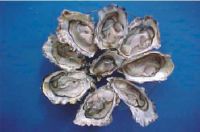Saturday, April 20, 2024
News and Views from the Global South
BRAZIL: Small Fishermen Trade in Nets for Oyster Farms
Fabiana Frayssinet
- In a modest restaurant on a beach at the southern tip of the Brazilian island of Florianópolis, a couple celebrates, with champagne and oysters, “one more year of vacations and love.”
The tourists, who are from the southern Brazilian state of Rio Grande do Sul, have repeated the same ritual for 15 years in the Beira d’Agua (Water’s Edge, in Portuguese) restaurant in Sambaqui, a small beach in the neighbourhood of Santo Antonio, Florianópolis, to the south of the capital of the state of Santa Catarina.
The simple restaurant is typical of this fishermen’s village, where the traditional architecture reflects past waves of immigrants from the Azores Islands: wooden cabins on stilts along the seashore, with discoloured walls and few decorations, in this case just a Christmas tree and lamp made with oyster shells.
Nor does the restaurant sell the champagne, which the couple have brought to accompany the plate of oysters. But for them and other tourists who visit more upscale restaurants around here, Beira d’Agua has no competition.
The couple eat smoked oysters and oysters in garlic sauce, and other seafood that fishermen have just brought in on their small boats, which land on the beach only a few metres from the table.
“It’s a simple, authentic place,” says Karen García, who works in advertising.
“The oysters are fresh, cultivated right here, and the evening is really special,” adds her husband, businessman Sergio Paezzi, gazing out the window to watch the sun go down behind the bridge that joins the island of Florianópolis to the mainland.
In the past, Amaral was barely scraping by as a small-scale fisherman. But now, he is earning between 2,000 and 3,000 reals (1,175 to 1,765 dollars) a month cultivating oysters and running his small restaurant.
“All of the local fishermen have seen an improvement in our lives,” he tells IPS.
“Now we have a steady income, which fishing just did not provide. One day you would bring in a good catch and the next day you wouldn’t. But oysters gives you an income every day,” he says.
The “field” where Amaral farms oysters is a 200 square metre area, four metres deep, marked off by floats, 100 metres out to sea.
The “oyster seed”, or larvae, are placed in net cages, where they take around seven months to grow to adulthood, when they are harvested. Each cage holds some 1,000 young oysters and 200 adults.
Oyster farming began in the area in the late 1980s, after two years of discussions among local fisherfolk and the Federal University of Santa Catarina (UFSC), which decided to promote the activity in the region, says Amaral.
“The idea was to find out if oyster farming could become an alternative for small-scale fishermen, who were having trouble surviving,” says Claudio Blacher, an oceanographer with the UFSC shellfish laboratory.
The idea was so successful that the laboratory now produces more than 40 million seed oysters a year, which it sells for 10 reals (5.88 dollars) per batch of 1,000.
Around 100 oyster farmers belong to a cooperative in Florianópolis. Some of them, like Amaral, produce oysters for their own restaurants, while others sell what they produce to local companies that resell them to more populous states like São Paulo and Río de Janeiro.
The cooperative’s aim is to sell its oysters on its own, without middlemen. It already has a small company where oysters are washed and packaged.
Amaral says he purchases between 300,000 and 450,000 seed oysters and produces about three tons of oysters a year.
Blacher explains that the species cultivated by the local oyster farmers is the Pacific oyster (Crassostrea gigas), which produces a good yield and is widely consumed in Canada, France and the United States. In addition, different varieties have been brought in from the coasts of Chile “and have adapted very well,” he adds.
The project has been extended to the cultivation of mussels (of which there are some 900 producers in the region) and scallops.
The oceanographer says that not only has the initiative improved the lives of the local fisherfolk, but it is environmentally beneficial as well.
“The cultivation of shellfish is an environmentally-friendly activity, because molluscs, as filter-feeders, reduce the cloudiness of water, increasing the penetration of light and thus boosting the productivity of that area,” he says.
The activity also “strengthens biodiversity, because the oyster culture structures host a variety of small invertebrates and a chain of animals that develop together,” he adds.
Amaral has a more simple explanation: “This is good because it’s something that does not pollute nature. On the contrary, you have a fresh oyster, just harvested from the sea. The oyster is nutritional and can only do you good.”

 Print
Print




